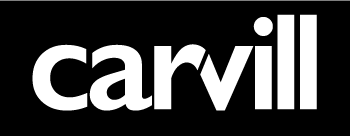Who’s in control on social – you are. You really don’t have to get naked on social.
It’s a consistent theme in my social media training and consulting sessions. People, be they from large corporations, business owners or entrepreneurs thinking of getting started – have a similar worry when it comes to using social media platforms. That worry is around ‘lack of control’.
When I say, lack of control, what I refer to is that there is clearly a feeling from people who are about to embark on social media platforms that they are going to have to get comfortable with baring all and opening up their deepest secrets on the platforms.
deepest secrets on the platforms.
Right? No, most certainly, wrong! You are ultimately always in control of what you say.
I can understand where this ‘fear’ and discomfort comes from. In the press we largely see negative case studies, where human error has occurred on a far reaching channel like Twitter. For example, let’s say, what was thought to be a private direct message, one to one, has actually been sent as a one to many conversation – and before you know it caused a viral frenzy to escalate beyond original comprehension. (This has happened a few times with politicians). The lesson here is not what’s being said, but rather, to ensure you’re using the platforms correctly to keep discussions one to one.
If we look at the root cause of most of the cases reported, it wasn’t the platform that caused the viral element to happen, but rather the ‘human error’ that kick-started the interest.
Yes, the platforms are social, and therefore, have been designed to connect us to one to many and share things quickly – however, the fundamental truth is that you are in control of
- what you say,
- to whom you connect and
- why you’re connecting.
So let’s placate some of the worries:
1) I haven’t completed my profile on LinkedIn because I don’t want everyone to know everything about me.
We say: Just because the profile format asks you for certain pieces of information, it does not mean that you have to complete it as they suggest. Our advice is to keep in mind what you are using the profile for and ensure that you target the content accordingly. Just as you would tailor your CV to each specific role, then target your profile accordingly. Remember, you can edit your profile at any time. We do advocate that you complete the information to 100% (as that helps with your visibility and being found in searches) – but complete the information on your terms, using relevant keywords that matter to you. You don’t have to showcase every job you’ve had since 1990, or every element of your education – simply add in the information that you want to share.
2) I have to follow or connect with everyone that makes a request.
We say: No you don’t. Review their accounts, timeline, connections – see if it makes sense for you to connect with them and if so – do so – if not, don’t. If someone wants to connect on Twitter, they’re not going to take it personally if you don’t follow them back. Twitter is so fluid and fast that they probably won’t even notice. With LinkedIn – if someone is trying to connect with you and you don’t know them – send an email back to them without connecting asking them why they want to connect, what’s the relevance – make it clear that you only connect for specific reasons. And, if they fit your objectives, then connect – but only if it makes sense for you.
3) If I have a Facebook Page everyone on that Page is going to know what I do personally on Facebook.
We say: A Facebook Page is a completely different entity to a Facebook Profile. Even if your Page is administered through a personal Facebook Profile – there is absolutely no correlation between the personal content and the Page content. It is effectively like switching from one system to another - the Personal information does not feed over to the Page.
4) I have to put up with all the irrelevant noise coming in from the people I connect with.
We say: No you don’t. You are in complete control. If someone is talking nonsense all the time on Twitter – unfollow them. If someone is being irrelevant or too noisy on Facebook – you have the option turn the noise up or down for any individual, without them ever knowing you have done so – or doing anything as severe as ‘unfriending’ them. Of course, if someone is being abusive or rude and you’re sick of their updates – then of course, you’re completely in control again – and if relevant, you can report them. Again, on LinkedIn – you can disconnect from someone by simply hitting the ‘remove connection’ tab.
5) If I say something thousands of people are instantly going to see it.
We say: Highly unlikely. It does happen – certain things have been said, and they spread like wildfire. However, that’s usually because there is significant virality to what is being said – and it’s around a conversation or theme that many are already watching. For example – during the Olympics there was a chap that was severely rude to Tom Daley. Within minutes (literally) it was trending (which means the topic most are talking about) on Twitter – and not just in the UK, but worldwide.
Getting a topic to trend however, is no mean feat. The lifetime of a tweet is less than 22 seconds, so the likelihood that everyone that is following you is going to see that one tweet is low. Facebook has a very clever algorithm called, Edgerank, which effectively decides who is going to see what – so just because 2000 ‘like’ your page – it doesn’t mean that your status update automatically hits 2000 Facebook feeds. It will only show to those that are highly engaged with you – which realistically sits at around 5-10% of our audiences.
The lesson here of course, is not to mitigate who sees it – but rather to ensure that you have very clear rules of engagement, so you and all that are representing your business or brand know what they can or can’t say before they start talking.
So don’t let fear of saying the wrong thing, or connecting with the wrong people or too much irrelevant noise, stop you getting started. Our mantra is Plan, Listen, Analyse – before you Engage. Following this simple plan of action is going to ensure you get all your planning in place and therefore are very clear on what you are going to be saying, who you want to be connecting with – before you get started.
And be mindful – the technology is the technology – yes, it’s powerful, but what’s important is what you do with it.
I think this statement from @stoweboyd sums it up perfectly:
“It’s our dancing that makes the house rock, not the planks and pipes. It is us that make Twitter alive, not the code”.
Agree, disagree – would love to hear your thoughts.
@Michelle Carvill is owner and Marketing Director at Carvill Creative – the online visibility experts. A digital marketing and design agency based in Maidenhead, Berkshire. The agency covers all aspects of marketing strategy and online visibility - covering social media marketing and social media training, user focused website planning and conversion focused website design.
Want to talk to the team at Carvill Creative about your social media activity or training needs? We’re happy to chat, so simply ‘get in touch’.
Finally, why not download our useful Social Media Marketing Planner and Marketing Plan. They’re totally free to download and use.
